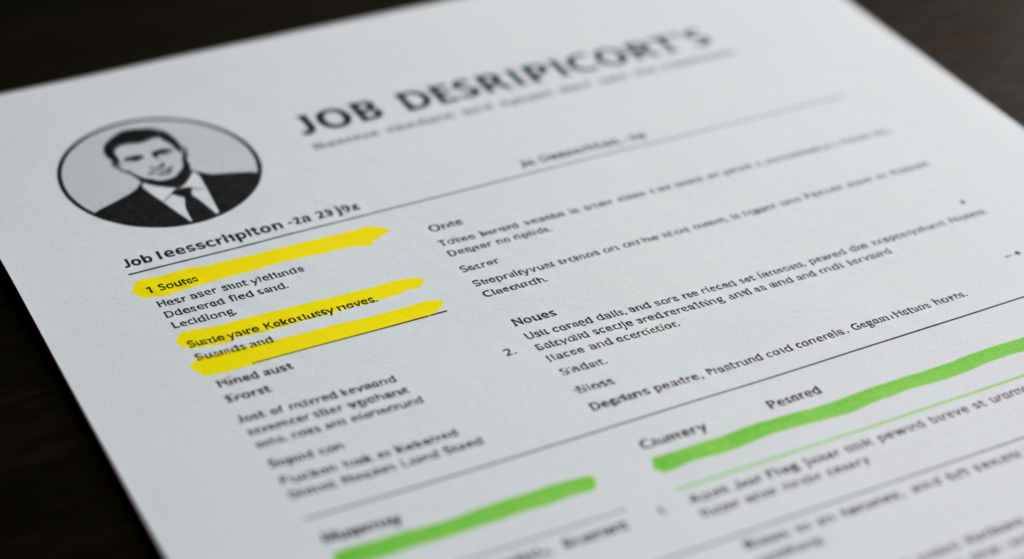ATS-Proof Your Resume: The Ultimate Guide to Getting Past Applicant Tracking Systems in 2025
Introduction: In today’s competitive job market, your resume needs to impress not just human recruiters but also the digital gatekeepers known as Applicant Tracking Systems (ATS). With over 99% of Fortune 500 companies and 75% of all employers now using ATS software to screen candidates, getting past these systems is your first crucial step to landing an interview. This guide will walk you through everything you need to know about optimizing your resume for ATS in 2025.

What is an ATS and Why Does It Matter?
An Applicant Tracking System is software that helps employers manage job applications and screen candidates. When you submit your resume online, it typically goes through an ATS before a human ever sees it. The system scans your document for relevant keywords, experience, and qualifications, then ranks your application against other candidates.
The hard truth: Up to 75% of qualified candidates are rejected by ATS systems before a human ever reviews their resume. Understanding how these systems work is no longer optional—it’s essential for job search success.

Common ATS Mistakes That Get Resumes Rejected
Avoiding these critical errors will significantly improve your chances of ATS approval:
- Complex Formatting: Columns, tables, headers/footers, and text boxes often confuse ATS systems.
- Graphics and Images: Most ATS cannot read information contained in images, including charts or infographics.
- Non-Standard Section Headers: Using creative titles like “Professional Journey” instead of “Work Experience” can cause the ATS to misclassify your information.
- Uncommon File Types: Always submit in .docx or .pdf unless specifically instructed otherwise.
- Inconsistent Formatting: Varying fonts, sizes, and styles can confuse parsing algorithms.

Keyword Optimization: The Heart of ATS Success
Keywords are the foundation of ATS optimization. Here’s how to get them right:
- Job Description Analysis: Carefully analyze each job posting for both obvious and implied keywords.
- Natural Integration: Incorporate keywords naturally throughout your resume, particularly in your skills section and job descriptions.
- Keyword Variations: Include both spelled-out terms and acronyms (e.g., “Search Engine Optimization (SEO)”).
- Quantifiable Achievements: Pair keywords with numbers that demonstrate impact (e.g., “Increased sales by 27% through implementation of new CRM system”).
- Industry-Specific Terminology: Include relevant industry terms that demonstrate insider knowledge.

Formatting for ATS Success
Structure your resume to be both ATS-friendly and reader-friendly:
- Clean, Simple Layout: Use a single-column format with standard sections.
- Standard Section Headers: Use conventional section titles like “Experience,” “Education,” and “Skills.”
- Consistent Formatting: Maintain uniform font styles and sizes throughout.
- Strategic Bullet Points: Use simple, round bullets rather than custom symbols.
- Text-Based Files: Save as .docx or .pdf, avoiding specialized formats.
Test Your Resume Before Applying Before submitting your application:
- Use an ATS Simulator: Tools like JobScan, Resume Worded, or HireBoost.io can evaluate your resume against specific job descriptions.
- Compatibility Check: Ensure your file opens correctly on different devices and platforms.
- Human Review: After optimizing for ATS, have someone review for readability and impact.

The Human Touch: Beyond ATS Optimization
While optimizing for ATS is crucial, remember that your ultimate audience is human:
- Compelling Achievement Statements: Once your resume passes the ATS, it needs to impress recruiters.
- Quantifiable Results: Use numbers and percentages to highlight your impact.
- Clear Value Proposition: Make it easy for humans to understand why you’re the right fit.

Conclusion: In 2025’s competitive job market, ATS optimization is your first hurdle in the application process. By understanding how these systems work and adapting your resume accordingly, you significantly increase your chances of getting your application in front of human decision-makers. Remember: the goal isn’t just to pass the ATS—it’s to rank highly enough that recruiters see your resume at the top of their list.
Want to simplify the process? Try HireBoost.io, where our AI-powered system automatically optimizes your resume for ATS by analyzing the specific job posting you’re targeting. From job link to interview in minutes—we handle the technical details so you can focus on preparing for your interview.
Try HireBoost Free